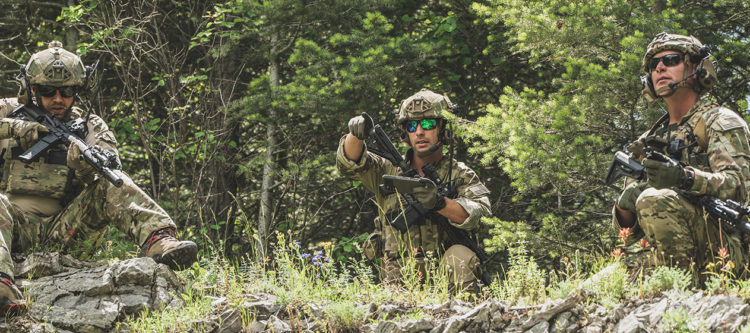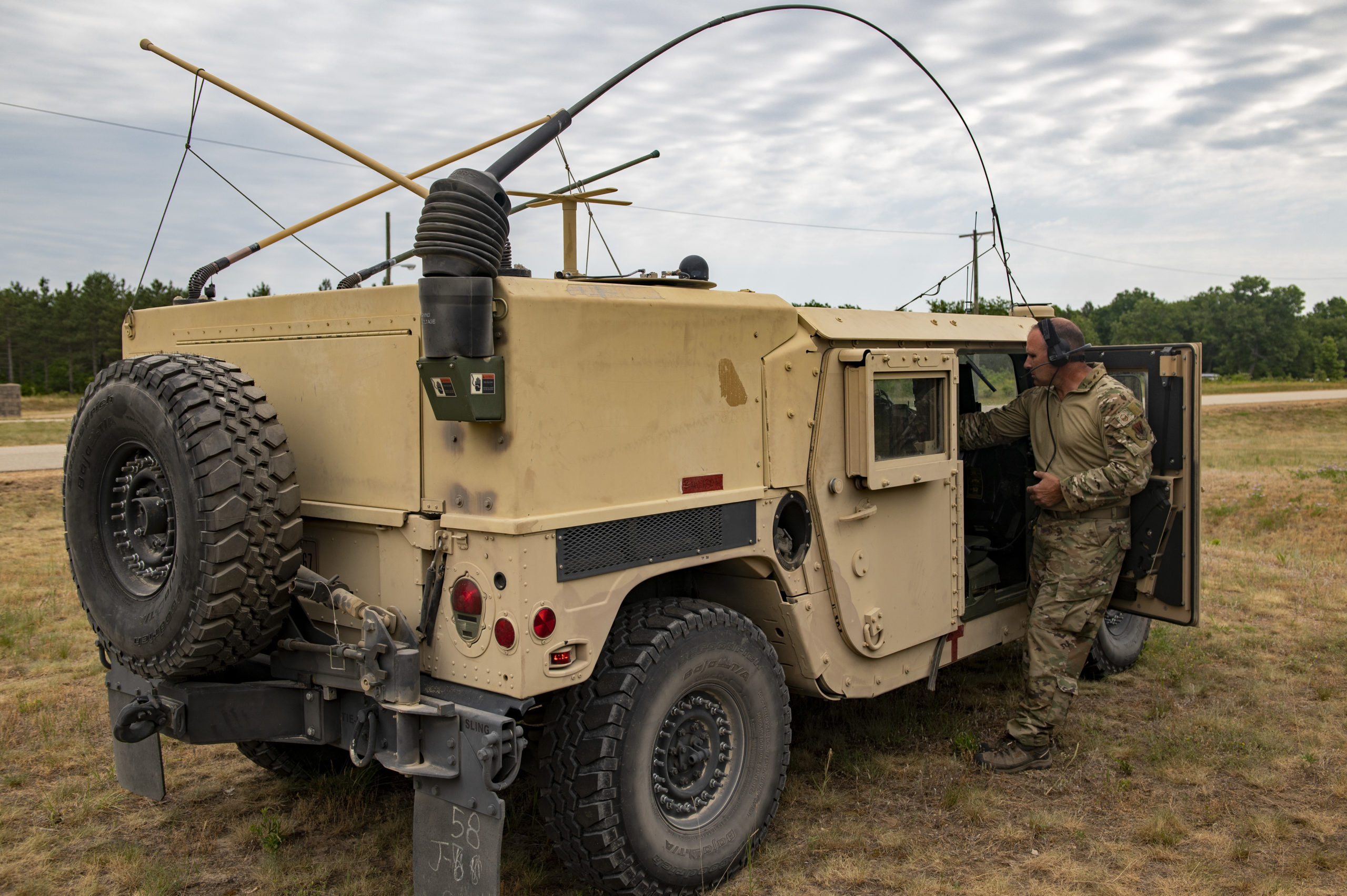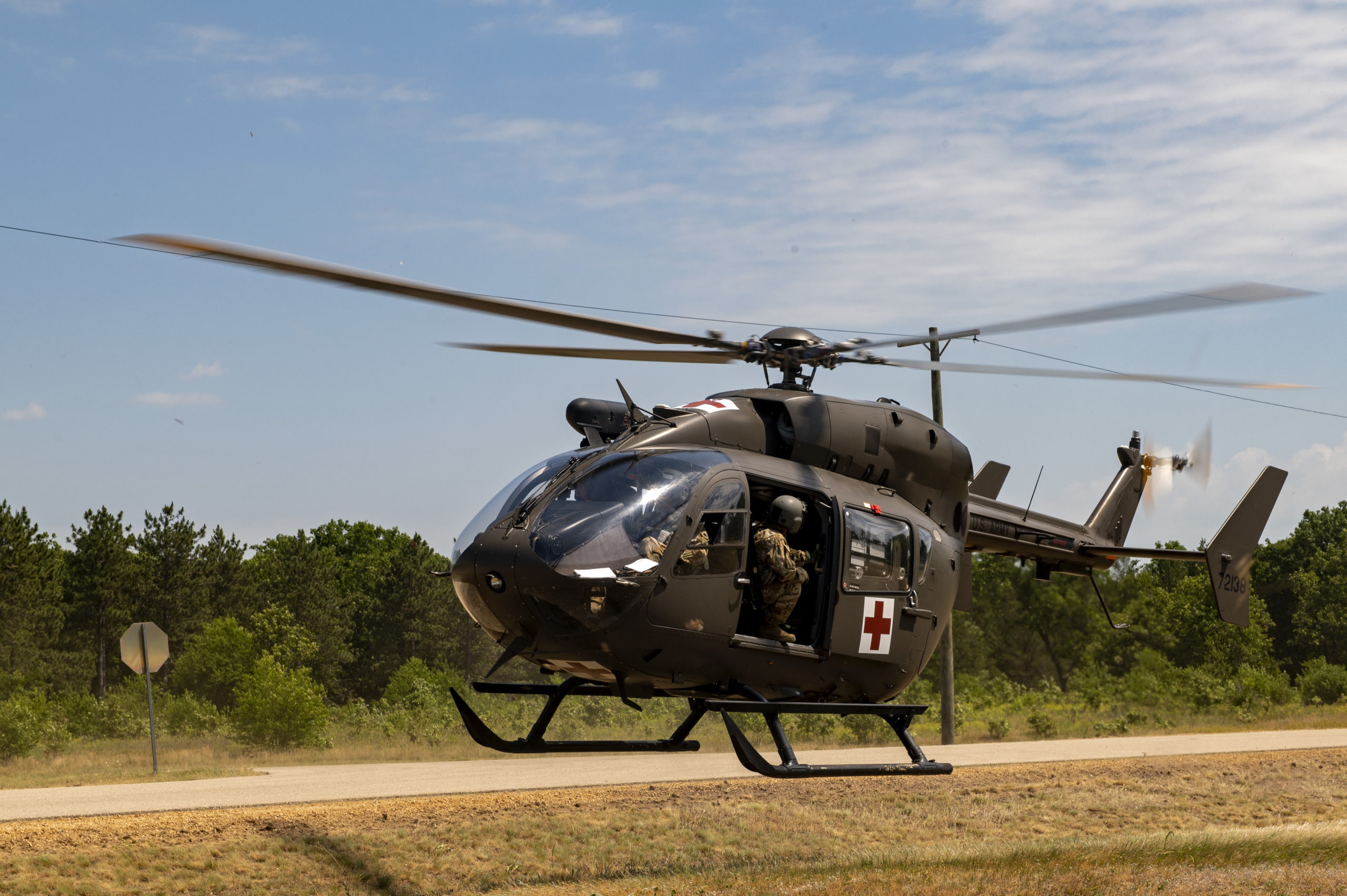Demonstrating communications for Domestic Operations (DOMOPS) at Patriot 24

Every year, the Air National Guard holds its Patriot Exercise event. This training exercise brings together personnel from the Air National Guard, Federal Emergency Management Agency (FEMA), Department of Homeland Security (DHS), and multiple local, state, and federal partners for a series of simulated scenarios designed to test their ability to “…support response operations during natural disasters.”
This event is a vital training exercise for today’s Air National Guard and Army National Guard since it focuses on Domestic Operations (DOMOPS) – missions conducted within the U.S. to support state and local governments. DOMOPS are among the organization’s most critical responsibilities – requiring the Air/Army National Guard to work within our nation’s borders to serve American citizens directly.
Major natural disasters, emergency scenarios, and other catastrophes ranging from hurricanes to floods to global pandemics require DOMOPS. Ensuring the Air/Army National Guard is prepared and ready to support Americans in these emergencies is essential for saving lives, mitigating damages, and enabling a rapid, effective response.
State and local first responders and law enforcement heavily rely on the National Guard in emergency scenarios due to its speed, efficiency, and ability to serve as a force multiplier. On average, the National Guard represents approximately 42 percent of the resources deployed through the Emergency Management Assistance Compact (EMAC).
The Patriot Exercise is the Air/Army National Guard’s training ground for DOMOPS – testing the mettle of Guardsmen in a range of scenarios ranging from “…strong storms bringing high winds, storm surges creating a collapsed building, mass casualties…search and rescue, [and the] evacuation of injured.”
This event helps develop relationships between the personnel that will invariably have to work together when disaster strikes. It also provides an opportunity to collaborate and coordinate the development of best practices and plans for emergency scenarios.

However, disparate organizations responding to natural disasters face challenges that simple networking and relationship-building can’t solve. Often, interoperability challenges between equipment, problems with communications, and other hurdles keep disparate teams from working together effectively. Events like the Patriot Exercise can also help the National Guard with this challenge. This event allows the participating agencies to demonstrate and evaluate new technologies that enable communications and situational awareness across agencies during emergency response situations.
One of the reasons why goTenna will participate in this year’s Patriot Exercise in conjunction with their partner, Verizon, is to solve one of the most significant challenges emergency response teams face when operating in areas impacted by natural disasters – reestablishing essential communications and situational awareness capabilities.
Comms essential to a collaborative response
As discussed previously on The Last Mile, critical infrastructure is one of the first natural disaster casualties. Whether it is a tornado, earthquake, hurricane, or terror attack, the existing terrestrial communications networks an area relies on are often denied or degraded because of the damage from a natural disaster.
Communication is essential for a cohesive, coordinated response to an emergency scenario or natural disaster. It enables decision-makers to provide directions and share information with tactical operators in the field. It allows tactical operators to interact with each other, provide updates, or ask for help when it is needed. It is also essential for keeping first responders safe and keeping tactical operators from having to rescue each other.
Reestablishing communications and situational awareness in these environments is critical but not always easy. Satellite communications and services will often provide connectivity and communications to the operations center – not the individual operators in the field. Worse, the tactical operators in the field will not all come from the same agency or organization.
National Guardsmen, local law enforcement, state law enforcement, first responders, and other organizations often converge on an area when disaster strikes. Events like the Patriot Exercise allow these organizations to train together. However, individuals from disparate organizations will invariably arrive on the scene with different equipment and communications solutions – many of which might not be able to interoperate.
This scenario represents complex challenges that the National Guard and other state, local, and federal government agencies must overcome. They need to reestablish communications in an area where terrestrial networks and infrastructure are disabled and ensure that established new networks can connect tactical operators representing several different organizations and carrying disparate equipment.
goTenna’s mobile mesh networking technology aims to solve this challenge of interoperability.

A resilient, interoperable solution
As we discussed, satellite communications are used in the aftermath of a natural disaster or other emergency event to provide high-bandwidth connectivity for the operations center. Satellite connectivity creates a bubble of connectivity that can benefit those in the immediate vicinity but only helps tactical operators dispatched within the area for missions like search and rescue.
Mobile mesh networking can enable the establishment of an ad hoc network capable of delivering essential communications and situational awareness capabilities for these tactical operators as they leave the bubble of connectivity around the operations center – enabling them to see each other’s location on a map and share information even if all terrestrial networks and critical infrastructure in the area is compromised.
The disaggregated nature of mobile mesh networks delivers baked-in resiliency since every mobile mesh networking radio functions to receive and retransmit a signal. The network remains available even if equipment loses power or is rendered inoperable.
Mobile mesh networking is inherently interoperable. Mobile mesh networking radios – such as the goTenna Pro X2 – connect via cable or Bluetooth to virtually any mobile device. When tactical operators from disparate agencies arrive, they can communicate and collaborate simply by pairing a mobile mesh networking radio to their mobile device.
By simply handing out mobile mesh networking radios to each individual on the scene, senior decision-makers immediately get the ability to track the physical location of their operators – even if they are not actively using their devices. This ad-hoc can make it significantly easier to dispatch assistance or backup when needed and drastically increases the safety of each tactical operator. If something terrible happens, the rest of the crew knows where they are and can find them.
These capabilities will invariably make the goTenna Pro X2 devices we will supply for the Patriot Exercise invaluable to its participants. The same way that mobile mesh networking has proven critical for connecting tactical operators in some of the world’s most austere and dangerous environments – including America’s southwest border.







No Comment